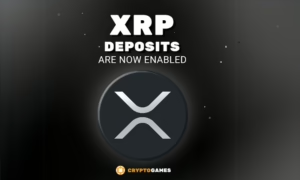Saudi Arabian Monetary Authority and Ripple Sign Agreement
When it comes to using blockchain technology, governments, central banks and traditional financial institutions, prefer to deal with Ripple. The Saudi Arabian Monetary Authority is the latest player to join that party

Ripple is taking its technology across borders to work with a wide range of institutions interested in FinTech abroad. Its recent partnership with UAE Exchange, Lianlian International and other global banks have paved the ways for XRP to be used as an efficient payment solution. The latest player to jump on the Ripple bandwagon was Saudi Arabia’s Monetary Authority – SAMA. This institution will allow banks to use Ripple for instant payment settlements.
Announcement of the Agreement
The announcement came in the wake of Gulf regulator concerns over financial technology, and after comments that members of the Saudi Royal family made against cryptocurrencies such as Bitcoin. This deal with Ripple, which is not decentralized like Bitcoin and in many cases runs contrary to the spirit of P2P transactions, would enable banks to settle payments sent into and out of the country. It promises to make cross-border transactions faster, cheaper and in a more transparent manner.
Saudi Arabia’s History with Cryptocurrencies
Back in 2017, Saudi Arabian officials criticized Bitcoin because the digital currency was not under the control of banks. However, during December 2017, Mubarak Rushed al-Mansouri, UAE central bank governor told Reuters that the Saudi central bank is on the same path with the United Arab Emirates’ Central bank to issue digital currency that would enable real-time payment between both countries. The implication of this is that Saudi Arabia seems to be open to blockchain technology and FinTech innovation, as long as it can control it somehow.
Ripple in Saudi Arabia
With Ripple, the Saudi establishment can rest assured that it will be able to control the implications of the technology because everything will be done through the banking system. Ripple’s plans in Saudi Arabia include the advancement of the payment settlement system to include one of the first use cases for its “xCurrent” software solutions to advance cross-border payment settlements.
On top of all, SAMA’s adoption of the xCurrent system would be the major impetus following the Bank of England’s successful proof of concept with Ripple in 2017.
Referring to these developments, Dilip Rao Ripple’s global head of infrastructure innovation said: “Central banks around the world are leaning into blockchain technology in recognition of how it can transform cross-border payments, resulting in lower barriers to trade and commerce for both corporates and consumers. SAMA is leading the charge as the first central bank to provide resources to domestic banks that want to enable instant payments using Ripple’s innovative blockchain solution.”
Ripple Reaps Market Benefits After Announcement
Following the announcement, Ripple’s XRP capitalized on the bullish sentiment its deal with SAMA generated. The price of XRP increased to a level of $1.13 USD from $1.03 USD earlier in the day. XRP has been able to sustain its price levels above that $1.13 USD mark so far, although it is trading about 67% below its January peak. Bitcoin is just about 45% off its all-time high, which shows that despite these central bank deals, the markets still prefer a truly decentralized P2P option.







